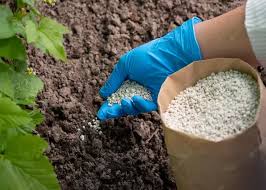
Okt . 22, 2024 01:27 Back to list
Manufacturer of NPK 20-10-10 Compound Fertilizer for Optimal Plant Growth and Nutrition
Understanding NPK 20-10-10 Compound Fertilizer A Guide for Manufacturers
In the realm of agricultural production, the importance of fertilizers cannot be overstated. Among the various types of fertilizers available in the market, NPK fertilizers are widely recognized for their efficiency in promoting plant growth. This article delves into the specifics of NPK 20-10-10 compound fertilizer, detailing its formulation, benefits, and the considerations involved in its manufacturing.
What is NPK 20-10-10 Fertilizer?
NPK fertilizers are characterized by three primary nutrients nitrogen (N), phosphorus (P), and potassium (K). The numbers in the designation (20-10-10) represent the percentage by weight of each nutrient in the compound. In the case of NPK 20-10-10, it contains
- 20% Nitrogen (N) This nutrient is crucial for leafy growth and overall plant vigor. It plays a vital role in chlorophyll production, which is essential for photosynthesis. - 10% Phosphorus (P) Phosphorus is important for energy transfer and storage, promoting root development and flower and fruit production. It helps in the establishment of strong roots, facilitating better nutrient absorption.
- 10% Potassium (K) Potassium enhances overall plant health by regulating various physiological processes. It improves drought resistance, disease resistance, and the quality of fruits and vegetables.
Benefits of NPK 20-10-10 Fertilizer
1. Balanced Nutrition NPK 20-10-10 provides a balanced ratio of essential nutrients, making it suitable for a wide range of crops. The higher nitrogen content makes it particularly beneficial for leafy vegetables, while phosphorus and potassium support flowering and fruiting plants.
2. Quick Uptake This compound fertilizer is formulated to allow for quick nutrient uptake by plants, ensuring that they receive the necessary elements to thrive, especially during critical growth periods.
3. Versatility It can be used in various agricultural settings, from conventional farming to greenhouses. Its adaptability makes it a favorite among farmers looking to optimize crop yields.
4. Improvement of Soil Health Regular application of NPK 20-10-10 can enhance the overall health of the soil, promoting better microbial activity, which is essential for soil fertility.
npk 20-10-10 compound fertilizer manufacturer

Manufacturing Process of NPK 20-10-10 Fertilizer
The production of NPK 20-10-10 fertilizer involves several key steps
1. Raw Material Selection Manufacturers begin by sourcing high-quality raw materials that contain nitrogen, phosphorus, and potassium. Common sources include ammonium nitrate for nitrogen, phosphates for phosphorus, and potassium chloride for potassium.
2. Blending The selected raw materials are then carefully blended in proportion to achieve the desired formulation of 20-10-10. This process requires precision to ensure consistent nutrient distribution throughout the fertilizer.
3. Granulation The blended mixture undergoes granulation, wherein the materials are agglomerated into granules. This step is crucial as it affects the fertilizer's solubility and ease of application.
4. Drying and Cooling Once granulated, the fertilizer must be dried and cooled to stabilize the product. Proper drying prevents clumping and ensures that the nutrients remain effective when applied to crops.
5. Quality Control Rigorous quality control measures are implemented throughout the manufacturing process. This includes testing for nutrient content, granule size, and overall consistency to ensure that the final product meets the required agricultural standards.
6. Packaging Finally, the NPK 20-10-10 fertilizer is packaged in appropriate containers to facilitate easy transportation and application. Manufacturers often provide information on the packaging regarding application rates and best practices for use.
Conclusion
NPK 20-10-10 compound fertilizer is a powerful tool in modern agriculture, offering farmers a reliable solution for enhancing crop yield and quality. With its balanced nutrient profile, this fertilizer supports various stages of plant growth, making it a versatile choice for different crops. For manufacturers, understanding the formulation, benefits, and production process of NPK 20-10-10 is essential for delivering a quality product that meets the needs of growers. As the demand for efficient and effective fertilizers continues to rise, the role of NPK fertilizers, particularly 20-10-10, will undoubtedly remain pivotal in the agricultural landscape.
-
10 10 10 Fertilizer Organic—Balanced NPK for All Plants
NewsJul.30,2025
-
Premium 10 10 10 Fertilizer Organic for Balanced Plant Growth
NewsJul.29,2025
-
Premium 10 10 10 Fertilizer Organic for Balanced Plant Growth
NewsJul.29,2025
-
Premium 10 10 10 Fertilizer Organic for Balanced Plant Growth
NewsJul.29,2025
-
50 Pound Bags of 13-13-13 Fertilizer for All Plants – Bulk & Organic Options
NewsJul.28,2025
-
High-Efficiency 15-30-15 Granular Fertilizer for Healthy Crops
NewsJul.28,2025
